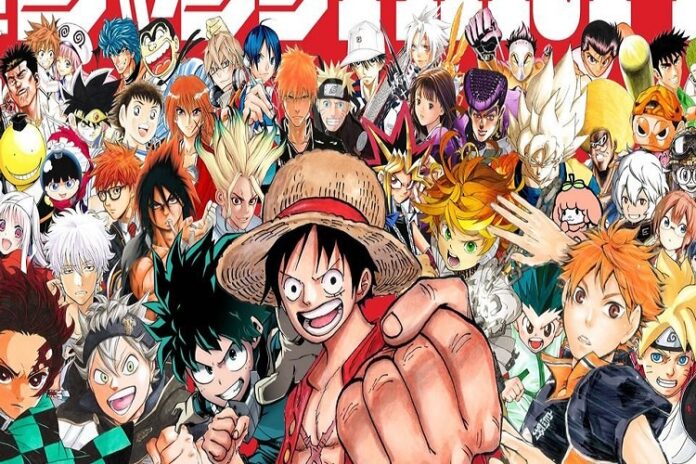Manga, the characteristic style of Japanese comic art, has undergone a remarkable evolution over the decades, transforming from its humble beginnings into a global cultural phenomenon. Rooted in Japan’s rich artistic and storytelling traditions, manga has not only adapted to changing times but also influenced and shaped modern visual narratives. This article traces the historical roots of manga and explores its journey through history, highlighting the cultural, technological, and artistic influences that have contributed to its modern-day significance.
Origins in Japanese Artistic Traditions
The origins of mangafreak can be traced back to ancient Japanese artistic traditions, such as emakimono (picture scrolls) and ukiyo-e (woodblock prints). These visual storytelling forms were precursors to the narrative structure and sequential art that define modern manga. Emakimono depicted historical narratives and legends through visual sequences, while ukiyo-e captured the essence of everyday life, illustrating a range of subjects from landscapes to portraits.
Early 20th Century: Pioneering Influences
The early 20th century witnessed the emergence of manga as a distinct art form with the publication of magazines like “Jiji Manga” and “Rakuten Pictorial.” These publications showcased the work of early manga pioneers like Rakuten Kitazawa and Ippei Okamoto, who laid the foundation for manga’s visual language and narrative techniques. The combination of sequential art, humor, and social commentary paved the way for the future of manga.
Post-War Transformation
The aftermath of World War II brought significant changes to Japanese society and culture, including the evolution of manga. The popularity of kamishibai (paper theater) – a form of street performance using illustrated cards – introduced storytelling to a wider audience. This period also saw the emergence of “gekiga,” a more realistic and dramatic style of manga that tackled mature themes, challenging conventional norms and expanding the scope of manga’s storytelling possibilities.
Shonen and Shojo: Diversification of Audiences
In the 1950s and 1960s, manga owl began to target specific demographics, resulting in the creation of two significant genres: shonen (aimed at young boys) and shojo (aimed at young girls). Osamu Tezuka, often referred to as the “God of Manga,” played a pivotal role in shaping manga’s future. His works, such as “Astro Boy” and “Princess Knight,” introduced complex characters, intricate plots, and a cinematic approach to storytelling, setting new standards for both genres.
Modern Manga’s Technological Leap
The latter half of the 20th century brought technological advancements that transformed manga’s creation and distribution. The introduction of offset printing allowed for higher-quality reproduction, while the rise of weekly manga magazines offered serialized content that captivated readers with ongoing narratives. The intersection of manga with other media forms, such as anime and video games, further propelled its popularity and global reach.
Influence of Pop Culture and Globalization
As Japanese pop culture gained international recognition, manga’s influence spread beyond its borders. Works like “Akira” by Katsuhiro Otomo and “Ghost in the Shell” by Masamune Shirow introduced readers worldwide to manga’s ability to explore complex themes, social commentary, and futuristic concepts. The global fascination with Japanese culture, known as “Cool Japan,” further solidified manga’s status as a cultural export.
Digital Age and Online Platforms
The digital age ushered in a new era for kunmanga creation and consumption. Online platforms and webcomics allowed creators to reach audiences directly, bypassing traditional publishing routes. Webtoons, a digital comic format originating in South Korea, also gained popularity for its vertical scrolling layout, interactive features, and diverse storytelling.
Global Appeal and Cross-Cultural Adaptation
Manga’s evolution has led to its widespread appeal and adaptation in various cultural contexts. Creators and audiences around the world have embraced manga’s artistic techniques, narrative structures, and storytelling conventions. Numerous international artists have been inspired by manga’s visual style, incorporating it into their own work and contributing to the art form’s ongoing transformation.
Influence on Contemporary Art and Media
Manga’s impact extends beyond comics and has left an indelible mark on contemporary art, animation, and media. Concepts introduced in the manga, such as mecha (giant robots), kaiju (monsters), and cyberpunk aesthetics, have influenced filmmakers, animators, and designers globally. The fusion of manga’s visual language with other art forms continues to inspire new creative directions.
Conclusion
Manga’s journey from its origins in ancient artistic traditions to its modern-day global prominence is a testament to its resilience, adaptability, and artistic innovation. The art form’s evolution has been shaped by historical influences, technological advancements, and cultural shifts, resulting in a dynamic and diverse storytelling medium that transcends borders and resonates with audiences across the world. As manga continues to evolve, it remains a reflection of the human experience, a canvas for creative expression, and a bridge that connects cultures and generations through the power of visual narrative.












